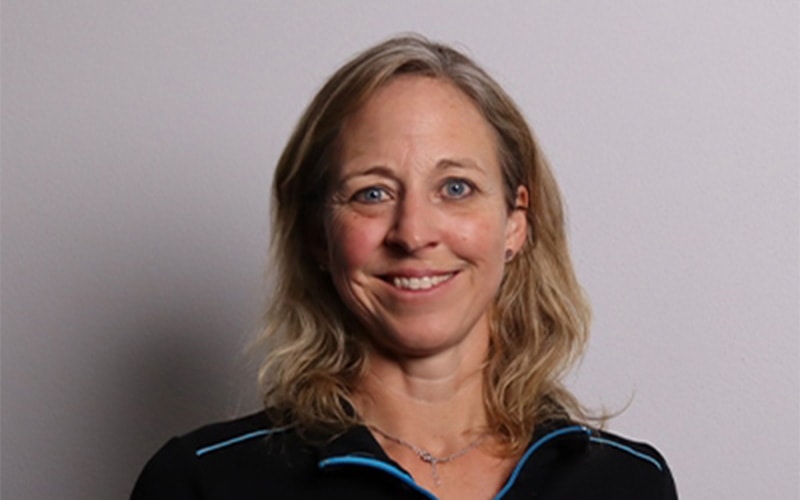Fitness in the water – how it came about and why it is not a sport for older people
AquaFitness is the same: A group of mostly retired sports enthusiasts moving rhythmically to music in a chest-deep pool. At least that’s the widespread cliché. AquaFitness, which started as aqua aerobics in the 1950s, is not only suitable for old people, but also for young people to achieve sporting goals. Not only HIIT workouts or other types of full-body training shape the body and muscles – AquaFitness can do that too.
AquaFitness is a comprehensive full-body workout in which the participants in groups perform specific exercises in the water that include the properties of the water. In contrast to conventional strength training, the movements are not only carried out against gravity, but also against water resistance. This protects the joints and movements that are difficult or impossible to do on land can be performed without pain. However, water sports are a recent development, with beginnings in religious practices, bathhouses and naturopathy.
Historical development
In various religions, the cleansing of the body with water is compared to spiritual cleansing. According to the Catholic Church, the child is washed clean of original sin with Catholic baptism (Catholic Church, 2000, ii.ii.i.i) and in Islam, washing hands, feet and face before prayer is a ritual and spiritual washing Purity. This religious need for ablutions established hammams in the Islamic world, in which religion, hygiene and wellness came together (Sourdel-Thomine, 1986, pp.139-144). Especially in ancient Rome, bathhouses became widespread and became places of exchange between social classes. In addition to cold and warm rooms, aroma baths were an integral part of every bath house and formed the basis for hydrotherapy, a German form of therapy in which water temperature and herbal additives were used for blood circulation in specific body regions (Schalle, 1948, pp. 21-55). Hydrotherapy also played a formative role in laying the foundations of physiotherapy. The treatment of chronic pain and injuries was carried out under water, so the corresponding body regions could be relieved and movement mechanisms could be carried out. This principle is also used in modern physiotherapy, for example when top athletes devote themselves to building up muscles in rehabilitation that were atrophied by an injury.
A mixture of religion, wellness and physiotherapy moved us to understand the water as a sports environment. The fitness world took to the water in the 1950s with the godfather of fitness, Jack LaLanne. His Hydronastics Water Exercises translated well-known aerobic exercises that viewers had already done at home into the pool and inspired a wide audience.
This enthusiasm for aqua aerobics continued into the notorious fitness craze of the 80s. Legwarmers, jazzercise and one-piece suits as well as aqua aerobics found their place in the iconic age that Arnold Schwarzenegger also gave us.
AquaFitness, just a sport for the elderly?
However, as Caroline Urscheler, Assistant Manager Fitnesspark Milandia, explains, aqua gymnastics is not the same as aqua fitness just because it takes place in water. The direct translation of land-based aerobics into water does not take into account the unique characteristics of water. The water resistance, the buoyancy of your own body, the water pressure on the body are all factors that have been little or not taken into account by modern aqua fitness. Equipment such as dumbbells and weights was basically dispensed with because they are too light in the water, while special water dumbbells are used in AquaFitness. They are specially designed dumbbells that are water displacement optimized to take advantage of water resistance.
Although the average age in the AquaFitness courses at the Milandia fitness park is rather high, AquaFitness is a supplementary training that is also ideal for competitive athletes and young people. The increased energy consumption, stimulated metabolism and improved oxygen intake through AquaFitness are not age-related and appeal to a wide range of exercisers. Not only people with chronic pain benefit from the much-touted aspect of joint-gentle training, but also healthy exercisers, because the slower movements in the water help with execution, lead to more mindfulness and promote a better mind-body connection. Muscles can be trained more consciously and efficiently if we perform exercises mindfully and feel which movements involve specific muscles.
Water resistance as a muscle trainer
In general, the advantages of AquaFitness are due to the physical properties of the water. The average energy consumption is boosted by the water temperature and the metabolism is stimulated. The body has to use energy to maintain body temperature while the water extracts heat. Water pressure is an often underestimated physical element of water sports. Two of the most important areas of activity are breathing and the cardiovascular system. Water exerts constant pressure on the body, which affects the rib cage, among other things. This makes breathing in more difficult because the chest and abdominal wall have to displace water when they expand. The diaphragm and rib muscles adapt to the increased load and effort, leading to improved oxygen delivery. However, it should be noted that water pressure also supports exhalation and thus has a sweeping effect on the exhalation muscles.
At the same time, this pressure leads to a temporary constriction of the veins. This causes blood pressure to rise and heart rate to drop because the heart muscle expands and the heart has to beat less to pump the same amount of blood. This means that doing sports in water is also suitable for endurance athletes, as long as AquaFitness is used as a supplement to existing strength and endurance training on land.
It is important to keep in mind that AquaFitness cannot replace training on land. Our entire life takes place under gravity and air pressure, and our physiology is designed for them. Infirmities and chronic ailments are alleviated in the water, but AquaFitness does not replace comprehensive training, as bones, muscles and joints have to get used to the stimuli outside of the water.
Nonetheless, AquaFitness offers the opportunity for people who cannot do it without pain. AquaFitness is offered in some fitness parks. A sport with a therapeutic and recreational background that took over the world from the United States and is an integral part of the fitness craze phenomenon of the ’80s. The targeted full-body training in the water uses buoyancy, water resistance and water pressure to guarantee participants an intensive and comprehensive workout for all age groups.
References:
– Catholic Church. 2000. Catechism of the Catholic Church (2. Edition).
– Schalle, Albert. 1948. Die Kneippkur: die Kur der Erfolge (11. Edition). Franzt Ehrenwirt Verlag, München.
– Sourdel-Thomine, Janine. 1986. Hammam. In: The Encyclopaedia of Islam (2. Edition). Brill, Leiden.
©swiss active – Legal action will be taken in response to copying or other duplication.
Author
Name: Caroline Urscheler
Profession: Assistant Manager Fitness Park Milandia
Website: activfitness.ch
movemi AG is the largest fitness provider in Switzerland. The company, based in Zurich Oerlikon, has been combining the ACTIV FITNESS and fitness park brands under one roof since 2022. More than 4,300 employees work in a total of 132 facilities throughout Switzerland and represent the densest network of studios in Switzerland. Around 200,000 members currently train in the two formats, 365 days a year.




